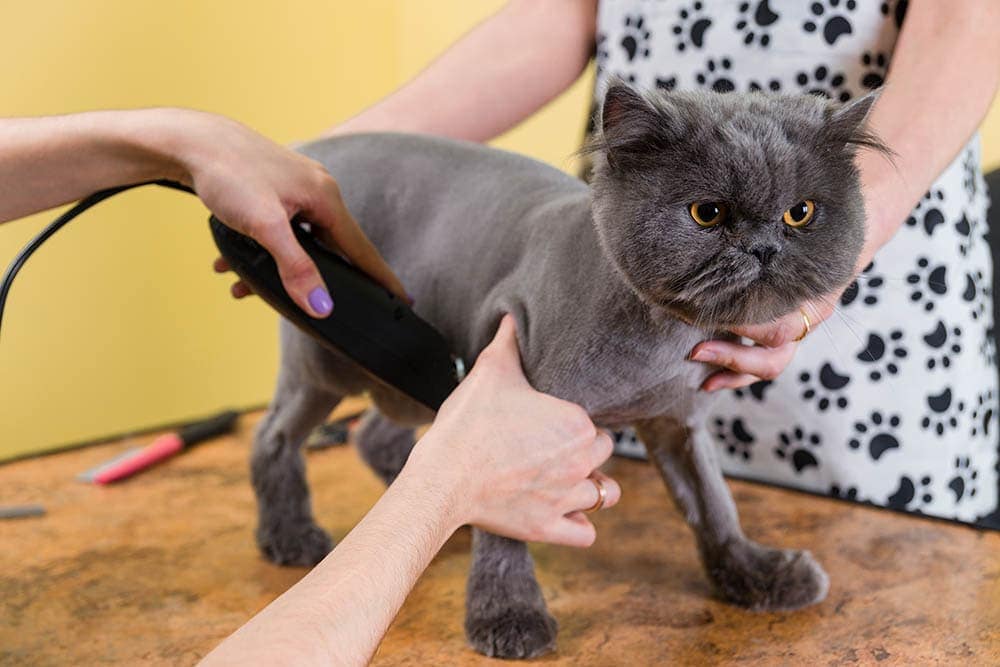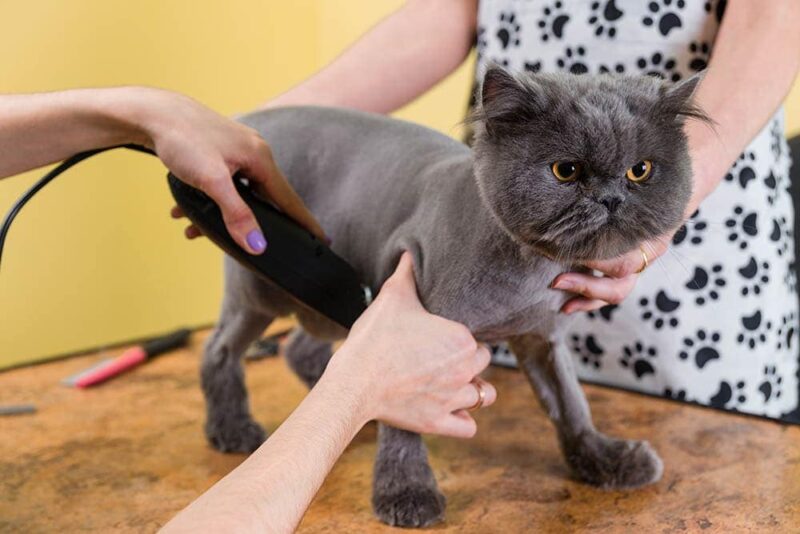As a general rule, cats should not be shaved. In some cases, however, there are exceptions. Cats with incredibly matted fur will benefit from being shaved and starting with new coat growth. Cats that are elderly or obese may face grooming challenges and need to be shaved in certain areas. Shaving can also help manage excessive shedding and reduce the frequency of hairballs.
Shaving is not part of a cat’s regular grooming session and should only be done when necessary. In this article, we’ll look at eight easy steps for shaving your cat. We hope they make the experience easier for you and your furry feline.
Preparing to Shave Your Cat
Your cat’s coat should be as clean as possible before you shave it. If your cat needs a bath, they should have one first and be thoroughly dry before you start. If bathing the cat would make the problem worse, such as excessive matting, then it’s unnecessary.
Gather your supplies so you have everything easily within reach. You may need another person to help you hold your cat still. You could also use a leash to keep your cat from running away. You’ll need:
- A brush or comb
- Pet hair clippers — You can choose whatever one you like, but make sure it’s suitable for cat hair (a number 10 blade is ideal)
- Cat nail clippers
You’ll want to trim your cat’s claws before you begin shaving them to reduce the risk of injury to yourself if they scratch you.
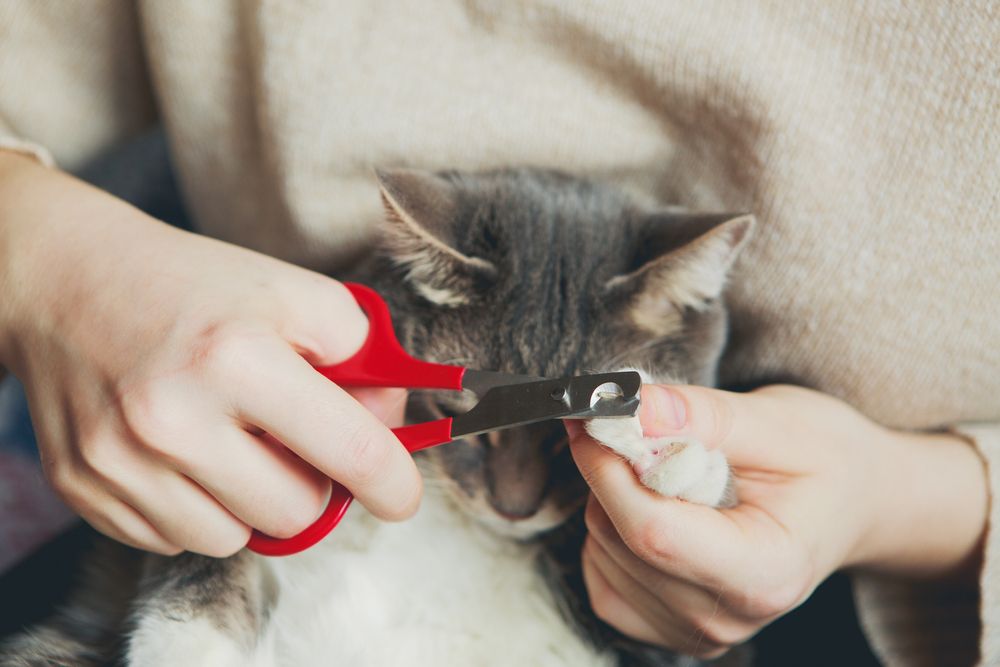
Location
Choose a place in your home to shave your cat where you can easily clean up cat hair once you’re done. A hard floor is better than carpeting, but if you have no alternative, make sure you have a vacuum handy.
A table or counter is ideal so you can place your cat on it to work on them and hold them still.
Style
Choose the grooming style before you begin so you know what to do ahead of time. This will save time, making it easier for you and your cat. Shaving the bellies of medium or long-haired cats reduces matting. A comb cut will remove a lot of hair, reducing shedding without completely shaving the cat.
A lion cut is a close shave around the body with hair left on the tip of the tail, face, and around the legs. You may even be doing a complete shave to remove mats and tangles. You’re ready to begin once you have the grooming style, the right location, and all your supplies.

The 8 Steps on How to Shave a Cat
1. Brush the Coat
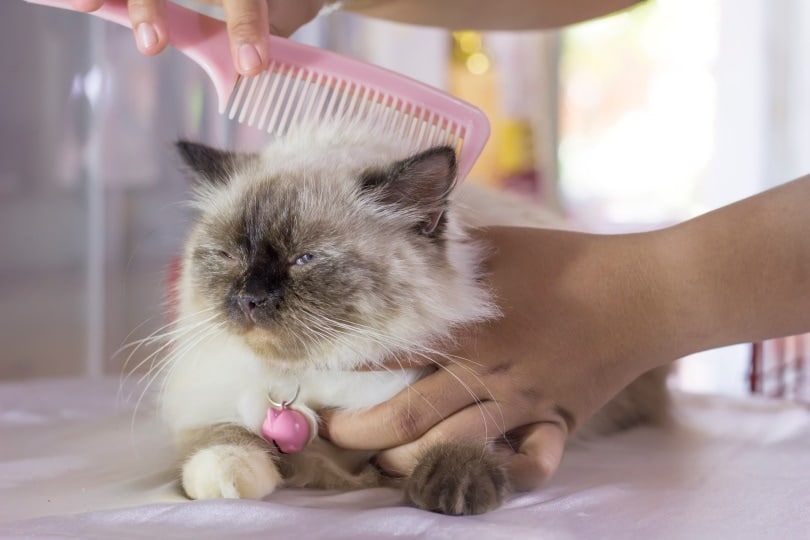
Brush or comb your cat’s coat to get it as smooth as possible. Remove as much loose hair and debris as you can to make shaving easier. If your cat has severe mats, leave them for now; the clippers will handle them.
2. Turn On the Clippers
Your cat may get scared at the sound of the clippers, so turn them on before going near your cat. You don’t want to overwhelm your kitty, so give them time to get used to the noise before you touch them with the clippers.
3. Pull the Skin Properly
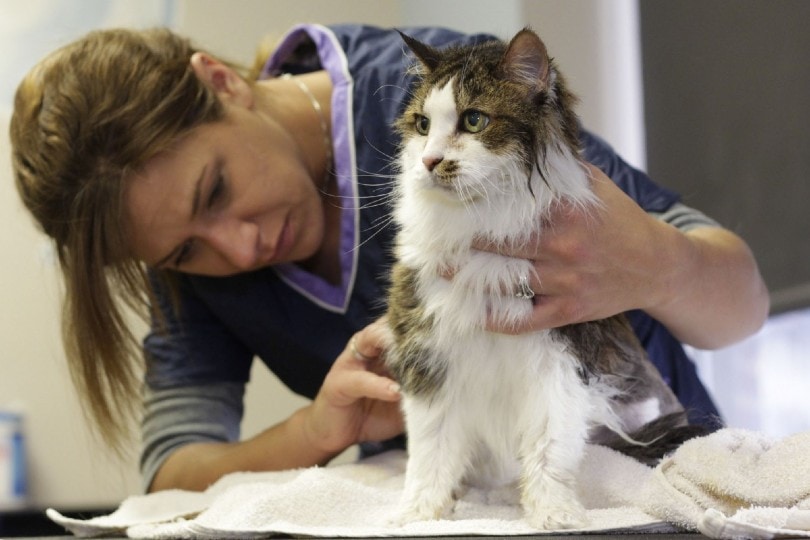
The area you’re shaving on your cat should have the skin stretched as taut as possible to avoid nicks. As you move to new areas around the cat’s body, always have the skin pulled tight and move the clippers slowly.
4. Move the Clippers
Gently touch your cat with the clippers where the skin is pulled taut while talking to them in a calm, soothing tone. You want them to remain as relaxed as possible. Move the clippers along your cat’s back in the direction that the hair grows.
You are gently skimming the clippers over the hair’s surface. Don’t use too much pressure, or the clippers can cause rashes. Don’t shave against the direction of the hair growth.
5. Leave Enough Length
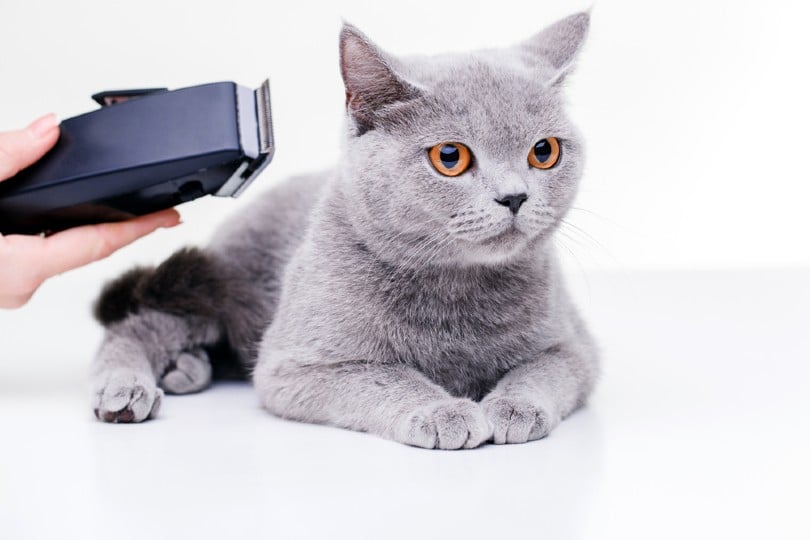
You don’t want to shave your cat down to the skin. It’s best to leave at least 1 inch of hair on the body. Shaving too closely can lead to ingrown hairs and irregular hair growth. Never use a razor blade to shave your cat.
6. Take Breaks
Shaving your cat is a time-consuming process. There’s no way to speed it up without risking injury to your cat or causing them distress. If your cat is visibly in need of a break, take one. You can come back to the job later.
Also, remember that the clippers will get warmer the more they work. If the clippers get too hot, they can hurt your cat. Always let the clippers cool down when necessary before continuing to shave.
7. Do Not Shave Delicate Areas
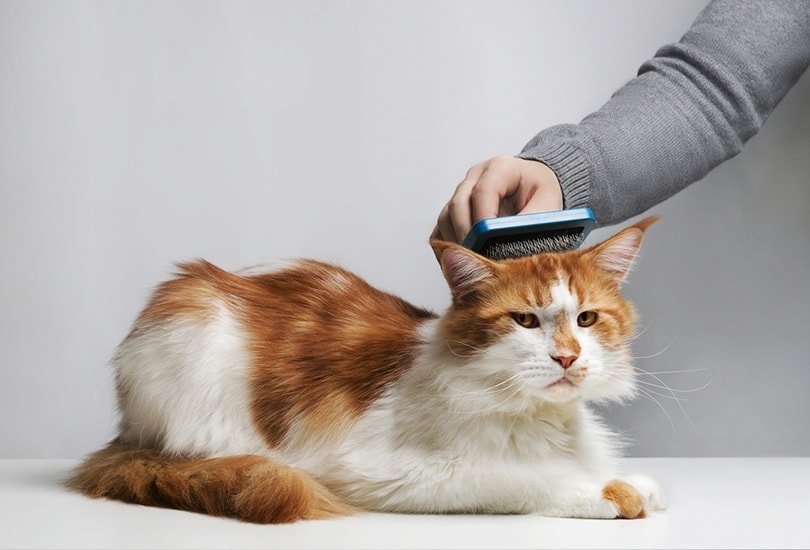
Avoid the face, most of the tail, and legs if you can. These areas are sensitive to injury and rashes from the clippers. The tail can be shaved, but some hair should always be left on the tip. Paws should not be shaved because they are easily nicked.
8. Remember Hygiene
If your cat winds up with poop in their fur often, you can shave the area under their tail and around the anus. This is especially helpful for large cats who can’t reach the area when grooming themselves or for long-haired cats who need help staying clean.
Why to Not Shave a Cat
Your cat should only be shaved when you have no other option. Many people think cats get too hot in summer weather, and shaving their coats will help keep them cool. The opposite is actually true.
Cat coats help regulate their body temperatures, keeping them cool in the summer and warm in the winter. By shaving a cat, you’re removing their ability to regulate their temperatures. If you must shave your cat during cold months, you may want to consider putting a sweater on them until their coat grows back.
Shaving a cat can also traumatize the animal and cause unnecessary stress. If your cat must be shaved but will not tolerate the activity, talk to your vet about possible sedatives you can use at home. You can also visit a professional groomer after your cat has been sedated to get the job done quickly and properly.
A cat’s fur protects them from the elements, including the sun. Once their fur is gone, they can easily get sunburned. If you shave an outdoor cat, consider using sunscreen whenever they go outside or keep them inside until their fur has grown back.
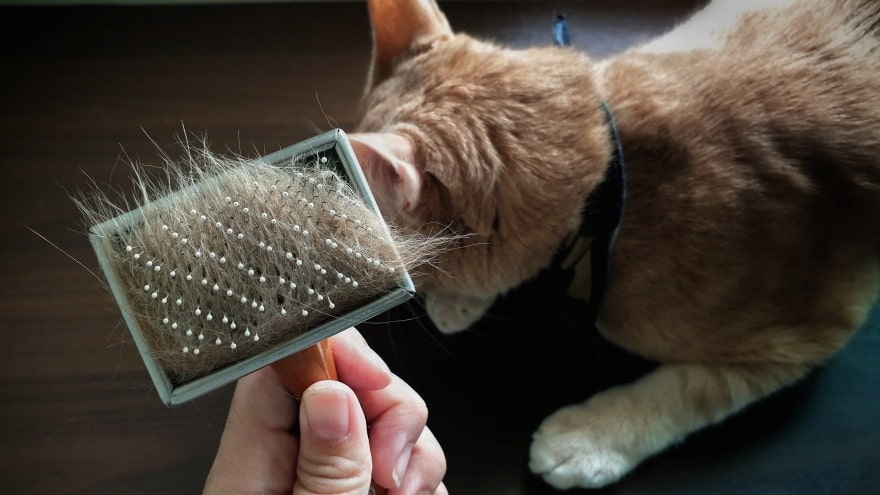
Final Thoughts
Although most cats don’t need to be shaved, sometimes, there are situations where shaving is the only solution. As long as you shave your cat properly and keep them safe and as comfortable as possible, you can do it yourself in the comfort of your home.
Once your cat’s coat grows back in, you can keep it clean and tangle-free with regular brushing or combing. We hope you’ve learned a few ways to make shaving your cat stress-free.
- See also: How to Shave a Cats Bum: 6 Simple Steps
Featured Image Credit: BY-_-BY, Shutterstock

